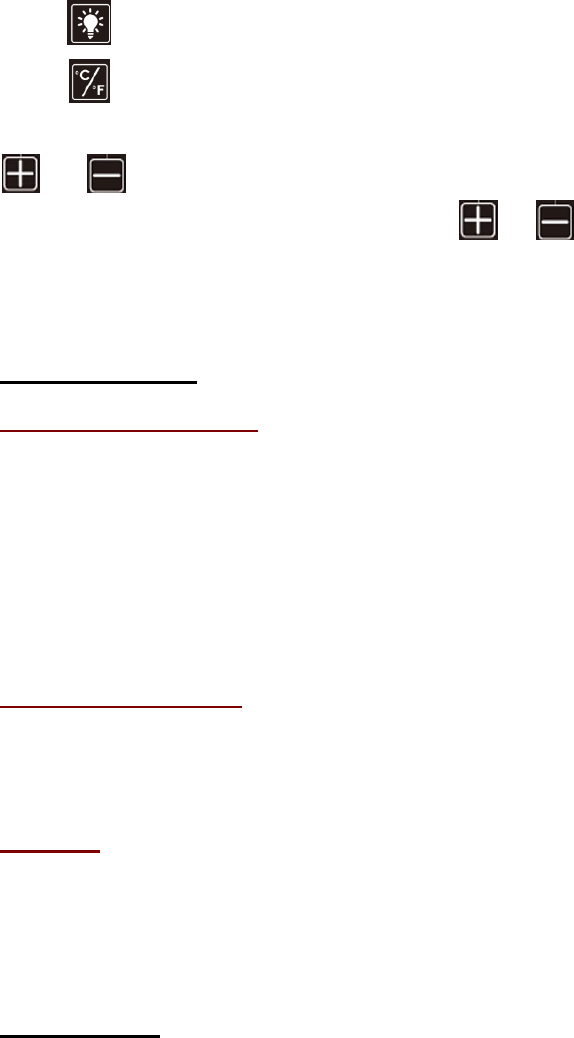Operation Manual

35
- Press button to turn on or turn off the appliances.
- Press button to change temperature display from Celsius to Fahrenheit.
- All the controls will be locked after no operation for 20 seconds, press temperature control button
and together for 3 seconds to unlock it.
- You can set the desired temperature by pressing or button. The temperature selected will
increase/decrease by 1°C with each press of the buttons.
- Each time you press a key, there will be a sound.
6. ÉQUIPMENT
The climate control system
According to advice from specialists, the ideal temperature for storing wine is around 12°C, within a
bracket of 10 to 14°C. Do not confuse this with service temperature, which varies between 5 and 18°C,
depending on the specific nature of the wine.
It is especially important to avoid sudden changes in temperature. Designed by specialists for
oenophiles, this appliance, unlike a simple refrigerator, takes into account the sensitivity of grand cru
wines to sudden variations in temperature by ensuring the close control of a constant average
temperature.
The anti-vibration system
The refrigeration compressor is equipped with special dampers (silent-blocks) and the inner space is
insulated from the body by a thick layer of polyurethane foam. These characteristics prevent the
transmission of vibration to your wines.
Defrosting
Your appliance is equipped with an automatic defrost cycle. When a cooling cycle finishes, the
appliance’s refrigerated surfaces are defrosted automatically. The defrost water is channeled into a
condensates evaporation tray which is located in the back of the appliance near the compressor. The
heat produced by the compressor then evaporates the condensates collected in the tray.
7. LOADING
The maximum recommended loading quantities for bottles are given as guidelines and are indicative
only; they provide a quick estimate of the size of the appliance (similar to the capacity of a refrigerator
expressed in liters).
They correspond to tests conducted with a standard bottle: the standard “75 cl light Bordeaux” bottle -
standards apply the geographical origin of each bottle shape (Bordeaux, Burgundy, Provence, etc.) and
a type (traditional, heavy, light, flute, etc.), each with its own diameter and height.
In reality and in extreme cases, you could store more bottles by stacking the same type of bottle without
using shelves, but a varied cellar comprises a wide variety of bottles and the practical aspect of
everyday cellar management limits its capacity. You will therefore probably load the appliance a little
less than the recommended maximum.










